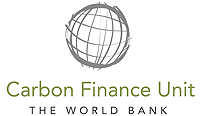Overview
The project consisted of reforestation of 813 ha of former pasture land with teak and native wood species in Southern Nicaragua. The objectives of this project were to contribute to the sustainable development of Nicaragua through reforestation to generate sustainable wood supplies to reduce pressure on natural forests and to serve as carbon sink.
The project has contributed to alleviation of poverty in one of the poorest countries of Central America. The main economic activity of the area is subsistence agriculture and cattle farming that offer very few employment opportunities. The majority of the population living in the vicinity of the project have depended on small-scale agriculture and few people are employed in public services. The project has sought to generate income and employment opportunities for rural poor and landless and prevent their emigration to neighboring Costa Rica.
The project has been a major source of employment for local communities and the project operations have been run almost exclusively by the communities. This included jobs on a permanent basis as well as seasonal jobs for tasks such as planting, weeding, pruning, fire control, thinning, harvesting and wood processing. The project operations such as planting, maintenance, harvest and wood processing have offered work opportunities throughout the operational life of the project. The wages paid to workers were above average wage and significantly above the minimal wage. The project also provided training and career opportunities for young people.
The major species planted under the project is teak (tectona grandis), but also a variety of valuable native species were planted. Most of these native species have become rare or threatened due to overexploitation of natural forests in Central America, some of which are important as fruit, food and habitat for wildlife.
Benefits
The environmental benefits of the project include prevention of fire and erosion, groundwater protection, improvement of soil and microclimate. The project obtained certification in accordance with the criteria laid out by the Forestry Stewardship Council (FSC) in 2007. The project has a harvest cycle of 18 to 30 years, depending on site quality and species. Forest products from thinning and harvest have been processed locally to improve value addition and to provide local employment.
